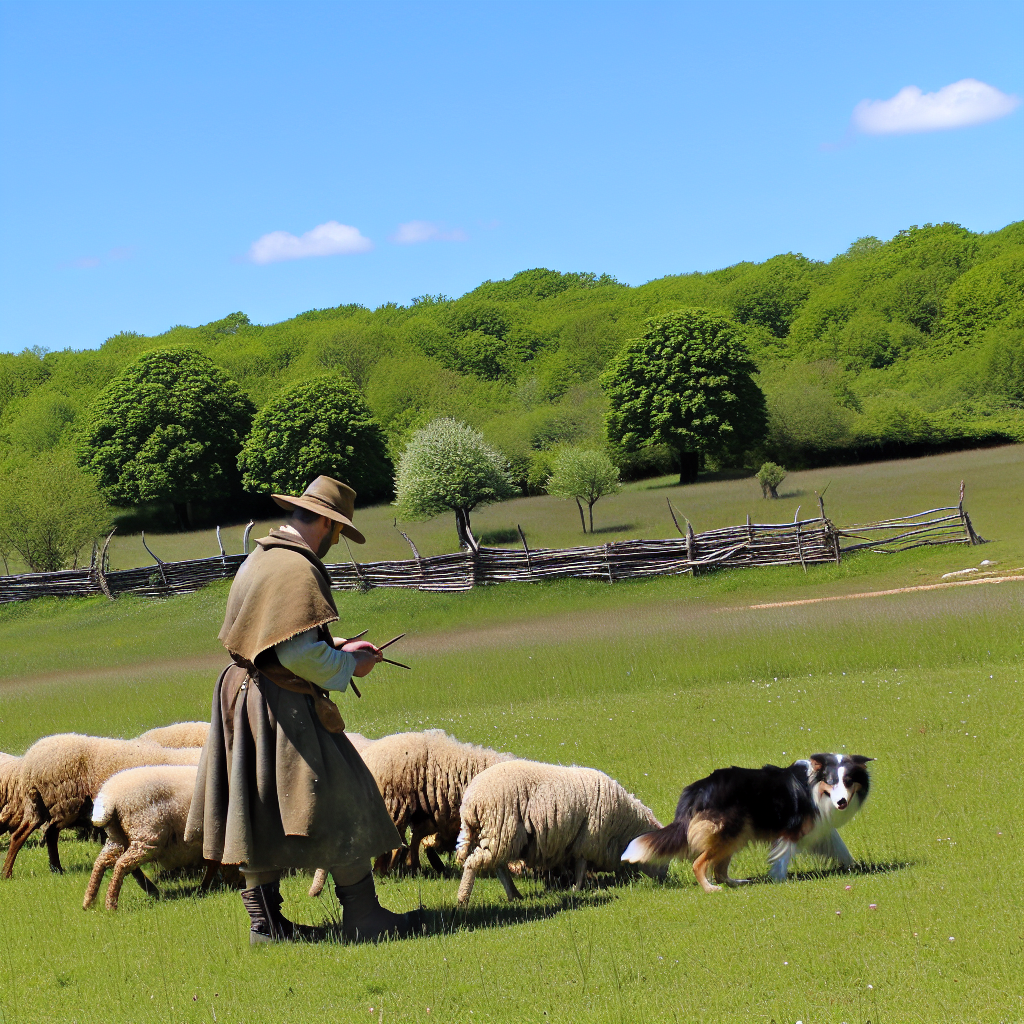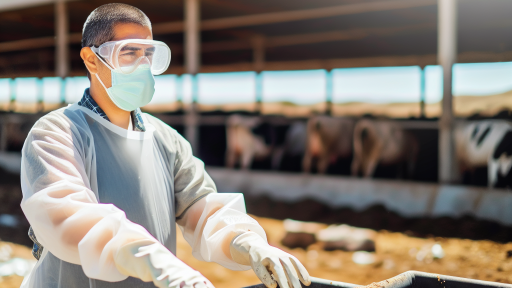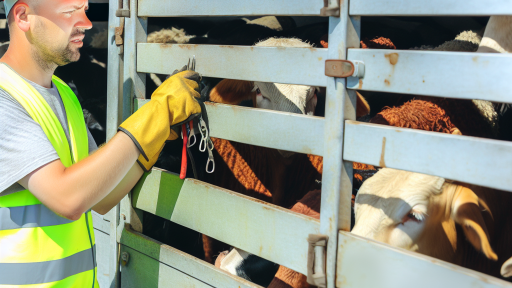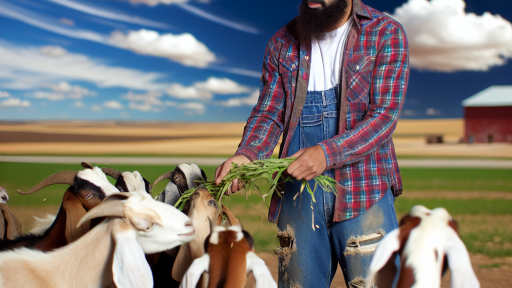Overview of Sustainable Sheep Grazing
Definition of Sustainable Sheep Grazing
Sustainable sheep grazing refers to the management of sheep in an eco-friendly manner.
This practice ensures the health of both the animals and the land.
Specifically, it aims to maintain soil fertility and promote biodiversity.
Moreover, sustainable grazing incorporates seasonal and rotational grazing techniques.
These techniques help manage pasture growth effectively.
Importance of Sustainable Sheep Grazing
Sustainable sheep grazing plays a vital role in ecosystem health.
It encourages the regeneration of native plant species.
Additionally, this practice can reduce soil erosion.
Moreover, it helps in carbon sequestration, which combats climate change.
Farmers benefit from improved pasture quality and animal health.
Consequently, this leads to enhanced productivity and profitability on farms.
Benefits for Biodiversity
By implementing sustainable grazing, farmers support diverse ecosystems.
This approach provides habitats for various wildlife species.
Furthermore, it can enhance pollinator health by maintaining flowering plants.
Economic Advantages
Sustainable sheep grazing can reduce feed costs for farmers.
Transform Your Agribusiness
Unlock your farm's potential with expert advice tailored to your needs. Get actionable steps that drive real results.
Get StartedHealthy pastures lead to lower veterinary expenses due to fewer health issues.
In the long run, this contributes to overall economic stability for farms.
Additionally, these practices align with consumer demand for eco-friendly products.
Benefits of Sustainable Grazing Practices for Soil Health
Enhancing Soil Structure
Sustainable grazing practices enhance soil structure significantly.
They promote the development of healthy aggregates.
This process improves water infiltration rates.
Consequently, it reduces runoff and erosion.
Boosting Nutrient Cycling
Sustainable grazing boosts nutrient cycling within the soil.
Sheep manure contributes vital nutrients back to the earth.
Organic matter from plant residues adds to soil fertility.
This cycling supports diverse microbial communities.
Improving Soil Moisture Retention
These practices improve soil moisture retention dramatically.
They encourage deeper root growth in plants.
As a result, soils retain water more effectively.
This benefit is essential during dry periods.
Enhancing Biodiversity
Sustainable grazing enhances biodiversity in ecosystems.
Multiple plant species thrive under thoughtful grazing rotation.
This diversity fosters resilience against pests and diseases.
Moreover, it attracts beneficial insects and wildlife.
Reducing Soil Compaction
Careful management of grazing reduces soil compaction.
Well-timed grazing allows for soil recovery.
This practice preserves the soil’s natural structure.
Ultimately, healthier soil promotes better plant growth.
Selecting the Right Grass Species for Sustainable Sheep Grazing
Importance of Grass Species
Choosing the right grass species is crucial for sustainable sheep grazing.
Showcase Your Farming Business
Publish your professional farming services profile on our blog for a one-time fee of $200 and reach a dedicated audience of farmers and agribusiness owners.
Publish Your ProfileHealthy grasslands promote animal health and productivity.
They also enhance soil quality and biodiversity.
Climate Considerations
Climate plays a significant role in grass selection.
Identify native species that thrive in your local environment.
Adaptability ensures robust growth across seasons.
Soil Quality Assessment
Evaluate soil quality before selecting grass species.
Conduct soil tests to determine pH and nutrient levels.
This information helps in choosing suitable grass varieties.
Grass Types for Sustainable Grazing
Consider different types of grasses for sustainable grazing.
- Perennial grasses offer long-lasting growth.
- Cool-season grasses thrive in cooler climates.
- Warm-season grasses excel in warmer conditions.
Diversity and Foraging Behavior
Diverse grass species promote healthy grazing habits.
Sheep prefer varied diets, which improves their overall health.
Incorporate legumes for additional protein sources.
Maintenance and Management
Regular management is necessary to maintain grass health.
Rotate grazing areas to prevent overgrazing.
This practice allows grass to recover and thrive.
Long-Term Sustainability Goals
Focus on long-term sustainability when selecting grass species.
Aim for grass that supports ecosystem balance.
Monitor and adapt management practices as needed.
You Might Also Like: Preparing Your Farm for Livestock Transportation
Rotational Grazing: Techniques and Advantages
Overview of Rotational Grazing
Rotational grazing involves moving livestock between pastures.
This practice promotes pasture regrowth and nutrient cycling.
By alternating grazing areas, animals benefit from fresh grass regularly.
Techniques of Rotational Grazing
Farmers use various techniques to implement rotational grazing.
First, they divide their land into smaller paddocks.
Next, they establish a grazing schedule that rotates livestock.
This schedule can be weekly, bi-weekly, or tailored to specific needs.
Effective fencing is crucial for controlling animal movement.
Creating a Grazing Plan
Start by assessing pasture conditions and livestock needs.
Consider factors like grass growth rates and animal dietary requirements.
A well-structured plan maximizes pasture use and minimizes overgrazing.
Monitoring and Adjusting
Regular monitoring ensures adherence to the grazing plan.
Farmers should adjust grazing intensity based on pasture recovery.
This flexibility allows for optimal forage availability.
Advantages of Rotational Grazing
Rotational grazing offers several benefits for sustainable farming.
Firstly, it improves soil health by enhancing organic matter content.
Secondly, it promotes biodiversity among plant species.
Animals experience reduced stress due to improved grazing conditions.
Ultimately, this practice increases overall productivity on farms.
Economic Benefits
Farmers experience cost savings through reduced feed expenses.
Healthier pastures can lead to increased livestock weight gain.
Showcase Your Farming Business
Publish your professional farming services profile on our blog for a one-time fee of $200 and reach a dedicated audience of farmers and agribusiness owners.
Publish Your ProfileAdditionally, well-managed grazing can lower fertilizer costs.
Environmental Impact
Rotational grazing reduces soil erosion and enhances water retention.
It also decreases methane emissions from livestock.
These benefits contribute to a more sustainable agricultural system.
See Related Content: The Role of Genetics in Meat Quality Improvement
Integrating Cover Crops in Sheep Grazing Systems
Benefits of Cover Crops
Cover crops enhance soil health significantly.
They prevent erosion and improve soil structure.
Additionally, cover crops contribute to nutrient cycling.
They can suppress weeds effectively during off-seasons.
Moreover, these crops attract beneficial insects to the farm.
Selecting the Right Cover Crops
Choosing appropriate cover crops is essential for success.
Farmers should consider climate, soil type, and grazing patterns.
Some popular options include clover, rye, and vetch.
These crops provide various nutrients and improve biological activity.
Farmers can also consult local agricultural extension services for guidance.
Implementing Cover Crops in Grazing Systems
Proper integration of cover crops requires careful planning.
Farmers should establish cover crops ahead of the grazing season.
Timing is crucial for maximizing benefits and forage availability.
Moreover, crop rotation helps maintain soil fertility and health.
Grazing management practices should be adjusted accordingly.
Managing Livestock and Cover Crops
Livestock play a vital role in maintaining cover crops.
Controlled grazing helps manage biomass and root systems.
This practice can improve soil compaction and aeration.
It also allows for nutrient distribution through manure.
Farmers should monitor the condition of cover crops closely.
Evaluating the Success of Practices
Continuous evaluation helps ensure effective practices.
Farmers should track soil health and crop yields over time.
Conducting regular soil tests provides valuable insights.
Gathering data helps in making informed decisions for future cycles.
Ultimately, adapting practices is key to sustainable success.
Gain More Insights: Goat Health Management Tips for Farmers

Water Management Strategies in Sustainable Sheep Farming
Importance of Water in Sheep Farming
Water plays a critical role in sustainable sheep farming.
Sheep require consistent access to clean water for optimal health.
Without sufficient water, sheep can suffer from dehydration and health issues.
Low water supply can also affect pasture growth and quality.
Implementing Efficient Water Use Practices
Farmers can adopt several water management strategies to enhance efficiency.
First, regularly monitor and assess water usage on the farm.
Next, install water-saving technologies such as low-flow taps and sprinklers.
Moreover, consider using drip irrigation systems for crop watering.
These measures can significantly reduce overall water consumption.
Showcase Your Farming Business
Publish your professional farming services profile on our blog for a one-time fee of $200 and reach a dedicated audience of farmers and agribusiness owners.
Publish Your ProfileCapturing and Storing Rainwater
Rainwater harvesting can be an effective strategy.
Farmers should install collection systems to divert rainwater.
Properly designed storage tanks can hold large volumes of water.
Utilizing rainwater can supplement other water sources during dry periods.
Creating Sustainable Water Sources
Developing alternative water sources is essential in sustainable farming.
Consider drilling wells or creating ponds to provide additional water sources.
Using clear filtration systems can enhance water quality from these sources.
Furthermore, farmers can explore partnerships with local water conservation groups.
Monitoring Water Quality
Regular water quality checks are vital for maintaining sheep health.
Farmers should test water sources for contaminants and pathogens.
Implementing filtration systems can help ensure clean drinking water.
Moreover, regular maintenance of water troughs can prevent algae growth.
Educating and Training Farmers
Training and education are crucial for implementing sustainable practices.
Farmers should attend workshops on water management techniques.
By sharing knowledge, farmers can help others improve their practices.
Government and non-profit organizations often provide resources and support.
Explore Further: Marketing Strategies for Selling Farmed Fish Successfully
Monitoring Sheep Health and Nutrition in Grazing Systems
Importance of Health Monitoring
Monitoring sheep health is essential for sustainable grazing.
Healthy sheep produce better wool and meat.
Additionally, regular health checks prevent disease outbreaks.
Farmers can adjust management practices based on health assessments.
Nutrition Assessment Techniques
Proper nutrition maximizes sheep productivity.
Farmers should analyze pasture quality regularly.
Conducting forage tests helps determine nutrient needs.
Farmers can implement dietary supplements when necessary.
Utilizing Technology for Health Monitoring
Technology can streamline health monitoring processes.
Wearable devices track sheep movement and behavior.
Automated health monitors provide real-time data.
Such tools enhance response time to health issues.
Best Practices for Grazing Management
Effective grazing management supports sheep health and nutrition.
Rotate pastures to prevent overgrazing.
Maintain adequate ground cover to reduce erosion.
Implement targeted grazing to manage weed populations.
Collaboration with Veterinarians
Working with veterinarians improves sheep health outcomes.
Veterinarians can provide tailored health plans for herds.
Regular check-ups ensure vaccinations are up to date.
They also help to identify and manage health risks.
Training and Education
Continuous education on best practices is crucial.
Farmers should attend workshops and training sessions.
They can also share experiences with fellow farmers.
Showcase Your Farming Business
Publish your professional farming services profile on our blog for a one-time fee of $200 and reach a dedicated audience of farmers and agribusiness owners.
Publish Your ProfileEducation enhances the implementation of effective practices.
Impact of Sustainable Grazing on Biodiversity and Ecosystems
Enhancing Biodiversity
Sustainable sheep grazing encourages diverse plant life.
It allows different species to thrive in shared environments.
This diversity attracts various pollinators and wildlife.
Soil Health Improvements
Healthy grazing practices enhance soil structure and fertility.
Sheep contribute natural fertilizers through their droppings.
This process aids in nutrient cycling within the ecosystem.
Water Management
Effective grazing practices support better water retention.
Well-managed pastures reduce soil erosion significantly.
In turn, this protects water quality in surrounding areas.
Habitat Preservation
Sustainable grazing helps maintain open landscapes.
This preserves habitats for many forms of wildlife.
It enables ecosystems to function without substantial interference.
Climate Benefits
Rotational grazing helps sequester carbon in soil.
This process mitigates climate change effects significantly.
Additionally, it fosters resilience in ecosystems facing climate stress.
Additional Resources
Enel announces largest U.S. solar grazing contract
Practical considerations for adaptive strategies by US grazing land …




